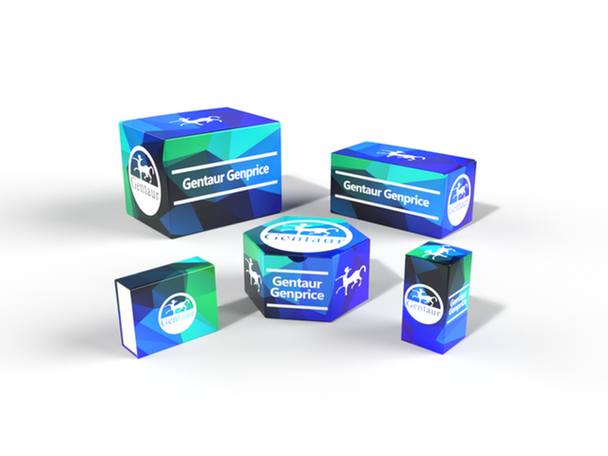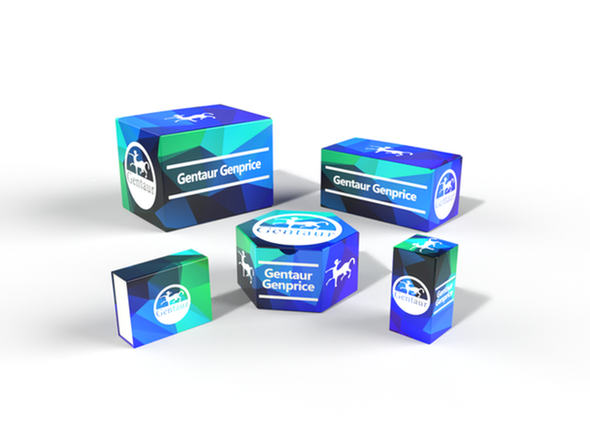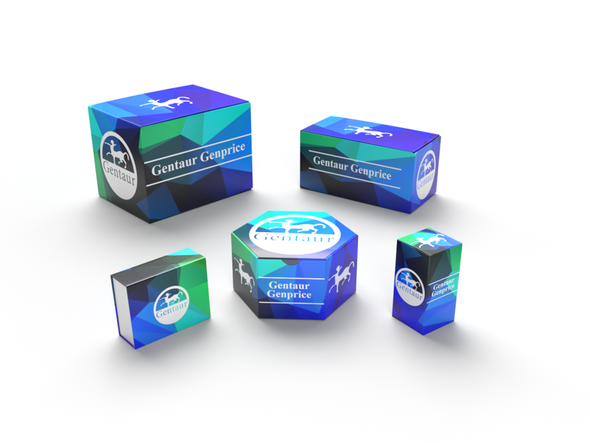Description
ACTA1/Alpha-actin Antibody | 57-981 | Gentaur UK, US & Europe Distribution
Host: Rabbit
Reactivity: Human
Homology: Predicted species reactivity based on immunogen sequence: Mouse, Rat, Rabbit, Pig, Chicken, Xenopus, Bovine
Immunogen: This ACTA1/Alpha-actin antibody is generated from rabbits immunized with a KLH conjugated synthetic peptide between 346-375 amino acids from the C-terminal region of human ACTA1/Alpha-actin.
Research Area: Cancer, Signal Transduction
Tested Application: WB, IHC-P, IF, Flow
Application: For WB starting dilution is: 1:1000
For IHC-P starting dilution is: 1:10~50
For IF starting dilution is: 1:10~50
For FACS starting dilution is: 1:10~50
Specificiy: N/A
Positive Control 1: N/A
Positive Control 2: N/A
Positive Control 3: N/A
Positive Control 4: N/A
Positive Control 5: N/A
Positive Control 6: N/A
Molecular Weight: 42 kDa
Validation: N/A
Isoform: N/A
Purification: This antibody is purified through a protein A column, followed by peptide affinity purification.
Clonality: Polyclonal
Clone: N/A
Isotype: Rabbit Ig
Conjugate: Unconjugated
Physical State: Liquid
Buffer: Supplied in PBS with 0.09% (W/V) sodium azide.
Concentration: batch dependent
Storage Condition: Store at 4˚C for three months and -20˚C, stable for up to one year. As with all antibodies care should be taken to avoid repeated freeze thaw cycles. Antibodies should not be exposed to prolonged high temperatures.
Alternate Name: Actin, alpha skeletal muscle, Alpha-actin-1, ACTA1, ACTA
User Note: Optimal dilutions for each application to be determined by the researcher.
BACKGROUND: The product encoded by this gene belongs to the actin family of proteins, which are highly conserved proteins that play a role in cell motility, structure and integrity. Alpha, beta and gamma actin isoforms have been identified, with alpha actins being a major constituent of the contractile apparatus, while beta and gamma actins are involved in the regulation of cell motility. This actin is an alpha actin that is found in skeletal muscle. Mutations in this gene cause nemaline myopathy type 3, congenital myopathy with excess of thin myofilaments, congenital myopathy with cores, and congenital myopathy with fiber-type disproportion, diseases that lead to muscle fiber defects.



![ACTA1/alpha-actin Antibody (C-term) [APR04217G] ACTA1/alpha-actin Antibody (C-term) [APR04217G]](https://cdn11.bigcommerce.com/s-1rdwiq712m/images/stencil/590x590/products/56641/56945/gentaur-genprice__26005.1661610467__29809.1661628092__75433.1661676199__77988.1661684280__64362.1661692443__47470.1661853340.png?c=1)
![ACTA1/Alpha-actin Antibody (C-term) [APR31306G] ACTA1/Alpha-actin Antibody (C-term) [APR31306G]](https://cdn11.bigcommerce.com/s-1rdwiq712m/images/stencil/590x590/products/62449/62753/gentaur-genprice__26005.1661610467__29809.1661628092__75433.1661676199__77988.1661684280__64362.1661692443__80126.1661865516.png?c=1)

